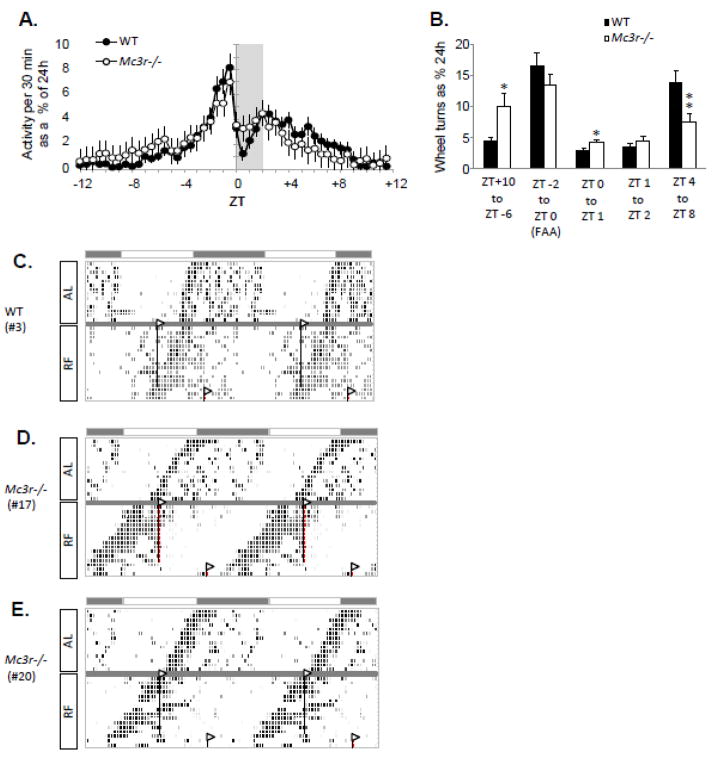Figure 4.
Preliminary results from an investigation of circadian rhythms in activity of WT and Mc3r−/− mice subject to RF in constant dark. (A) Averaged wheel running data for WT and Mc3r−/− mice as 30 min. bins. Each bin being the averaged of 3 d of activity after 2 wk of RF. ZT0 is the time of food presentation (1300 h). (B) Analysis of activity data separated into periods between and during meals. For this analysis, we separated this period into FAA (ZT-2 to ZT0 - the two hours prior to food presentation), the first and second hour after food presentation (most food is consumed in the first hour [81, 107]), and the period of post meal activity (ZT4 to ZT8). ZT+10 to ZT-6 is the 8 h period between meals when WT showed minimal activity. As predicted, WT subject to RF exhibited a period of increased activity of about 12 h (ZT-4 to ZT+8) centered around food presentation. As a group, Mc3r−/− mice appeared to exhibit FAA, with no significant difference from controls. However, activity between meals and in the first hour after food presentation was markedly different: they exhibited more activity the hour following food presentation (*, p<0.05), and were less active after the meal (**, p<0.01). (C-E) Analysis of individual mice indicated that the differences in activity shown in panel B were due to half of the Mc3r−/− mice not entraining to food presentation. Representative actograms showing activity of individual mice during the ad libitum free running period and subsequent RF are shown for a WT mouse (C), and for two Mc3r−/− mice which did not entrain to RF (D, E). Collectively, the analysis of wheel running data obtained in constant dark indicate that approximately half of the Mc3r−/− mice were not able to entrain their rhythm to nutrient intake after 2 wk of restricted feeding.

